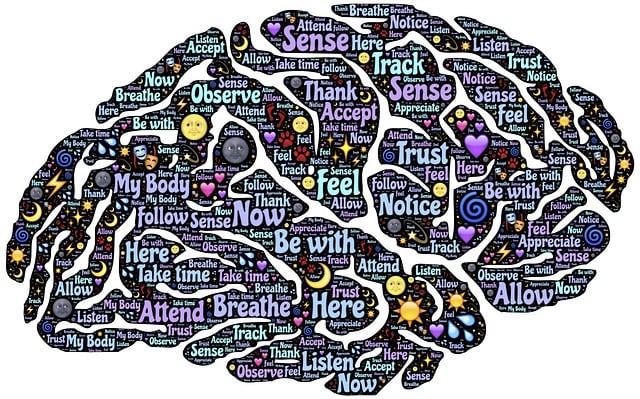Group facilitation in Longmont Therapy practices offers a powerful approach to mental health care. By creating supportive environments, therapists help individuals navigate emotional challenges, fostering social connections and personal growth. Effective communication, active participation, and non-judgmental spaces are key to successful group dynamics. Engaging activities and structured assessments enhance the therapeutic experience, empowering participants with coping strategies for improved mental wellness beyond therapy sessions. Longmont Therapy for Therapists-Clinicians leverages these techniques to revolutionize care, fostering resilient communities within therapeutic settings.
Mental wellness group facilitation plays a pivotal role in enhancing therapeutic outcomes, offering a unique dynamic compared to individual therapy. This article guides therapists and clinicians on effective techniques for leading supportive mental health groups in Longmont. We explore creating safe spaces, implementing engaging communication strategies, fostering active participation, and measuring progress. By mastering these skills, professionals can revolutionize group therapy practices, providing transformative experiences for clients seeking support and growth.
- Understanding the Role of Group Facilitation in Mental Health Care
- Building a Safe and Supportive Group Environment
- Effective Communication Strategies for Group Leaders
- Techniques to Foster Engagement and Active Participation
- Measuring and Evaluating Group Therapy Outcomes
Understanding the Role of Group Facilitation in Mental Health Care

In the realm of mental health care, group facilitation plays a pivotal role in fostering emotional healing processes and enhancing overall wellness. For therapists and clinicians, particularly those offering services in Longmont Therapy, understanding this dynamic is key to effective practice. By facilitating supportive group environments, professionals can enable members to navigate complex emotions, share experiences, and learn from one another—all essential components of stress reduction methods and positive thinking.
Group facilitation techniques provide a unique setting for individuals to engage in meaningful interactions, build social connections, and develop coping strategies. This collective approach not only complements individual therapy but also empowers participants with new insights and skills. Through structured activities and open discussions, facilitators guide the group towards a deeper understanding of their mental health challenges, encouraging personal growth and resilience. These collaborative practices are particularly beneficial in fostering a sense of community among participants, which is crucial for maintaining motivation and embracing positive changes throughout the therapeutic journey.
Building a Safe and Supportive Group Environment

Creating a safe and supportive group environment is paramount for effective mental wellness facilitation. This begins with establishing clear boundaries and expectations from the outset, ensuring every participant feels heard, respected, and valued. Therapists-clinicians playing the role of facilitators should encourage active participation while fostering an atmosphere of non-judgement, empathy, and confidentiality. Techniques like active listening, open-ended questioning, and reflective summarizing help build trust among group members.
In a space where individuals explore their inner strengths and share experiences, it’s crucial to leverage public awareness campaigns and self-care practices as tools for enhancing group dynamics. By integrating these strategies, facilitators can guide participants towards personal growth, resilience, and coping mechanisms that extend beyond therapy sessions. This holistic approach not only strengthens mental wellness but also prepares individuals to navigate challenges with enhanced coping abilities, ultimately enriching their lives.
Effective Communication Strategies for Group Leaders

Effective communication is a cornerstone for successful group facilitation, especially within the context of Longmont Therapy for Therapists-Clinicians. Group leaders play a pivotal role in creating a safe and supportive environment where every member feels heard and valued. One key strategy involves active listening, where facilitators pay close attention to not just what clients say but also their non-verbal cues and emotions. This skill fosters trust and encourages open dialogue, allowing members to share their experiences and perspectives openly.
Additionally, group leaders should utilize clear and concise language, ensuring everyone understands the discussion’s focus and goals. Encouraging participants to express themselves using “I” statements promotes emotional intelligence and helps in managing conflicts or sensitive topics. This approach facilitates better coping skills development and trauma support services within the group setting, ultimately enhancing the therapeutic experience for all involved.
Techniques to Foster Engagement and Active Participation

Creating an engaging environment is key to effective group facilitation, especially for therapists and clinicians in Longmont Therapy settings. Encouraging active participation fosters a sense of community and allows individuals to connect with their peers on a deeper level. One powerful technique is to incorporate interactive activities that promote self-care practices. For instance, starting sessions with a brief meditation or mindfulness exercise can help participants center themselves and actively engage in the discussion. This not only sets a calm tone but also models healthy coping mechanisms.
Additionally, group leaders can facilitate open dialogues by posing thought-provoking questions related to mental illness stigma reduction efforts. Encouraging members to share their experiences and perspectives can boost confidence and create a safe space for vulnerability. By actively participating in these conversations, individuals can challenge stereotypes, promote understanding, and enhance their support networks. These engagement strategies are essential tools for therapists aiming to create a dynamic and therapeutic group setting tailored to the needs of their clients.
Measuring and Evaluating Group Therapy Outcomes

Measuring and evaluating group therapy outcomes is a vital aspect of ensuring effective Longmont therapy for therapists-clinicians. It allows professionals to assess the progress and impact of group sessions, facilitating continuous improvement in treatment modalities. By implementing structured assessment tools, therapists can quantitatively and qualitatively gauge improvements in participants’ mental health symptoms, such as anxiety, depression, and stress levels. These evaluations provide valuable insights into the group’s dynamic, identifying successful interventions and areas for enhancement.
Regular monitoring of therapy outcomes not only benefits individual clients but also contributes to the overall research and development of group therapy practices. It encourages evidence-based approaches by showcasing what works best in treating various mental health concerns, including burnout prevention and depression prevention. Moreover, incorporating techniques like mindfulness meditation can be assessed for its effectiveness in enhancing participants’ emotional well-being, offering a holistic perspective on group therapy outcomes evaluation.
Group facilitation plays a pivotal role in enhancing mental wellness, as evidenced by the diverse techniques discussed in this article. By creating safe and supportive environments, therapists can encourage active participation using effective communication strategies. These methods not only foster engagement but also lead to measurable improvements in therapy outcomes, making Longmont Therapy for Therapists-Clinicians a valuable resource for professionals seeking to optimize group therapy sessions. Embracing these practices ensures that individuals receiving mental health care benefit from collaborative and impactful group experiences.














